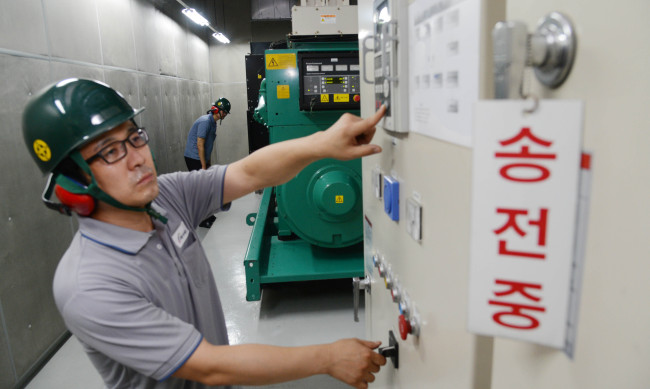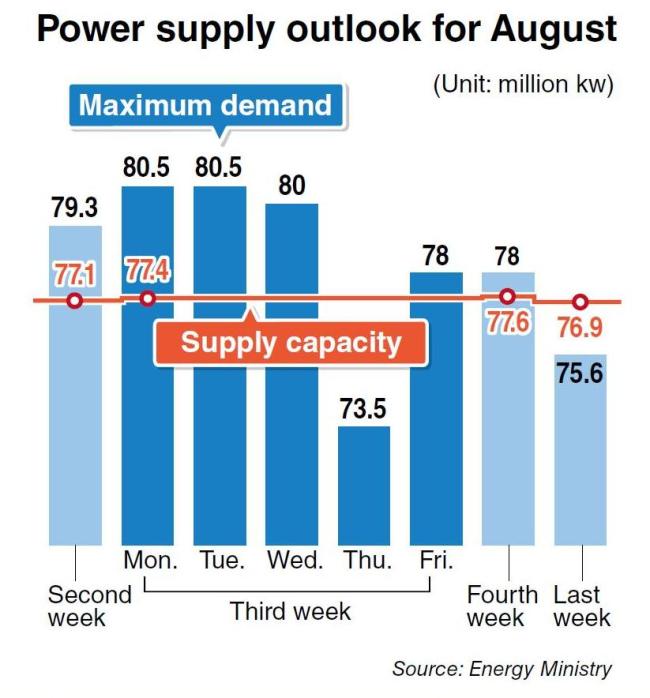 |
Engineers at Kumho Asiana Group work to operate the power generator installed underneath the conglomerate’s headquarters in downtown Seoul on Monday. (Park Hyun-koo/The Korea Herald) |
The operation of two thermal power plants in South Chungcheong Province was suspended on Monday, worsening power supply conditions and raising an alert on a possible forced power cut within this week.
The unit 3 thermal power plant in Dangjin with a power generation capacity of 500,000 kilowatts was halted due to a technical problem related to the steam turbine. Operations may possibly resume at the plant as early as next week, said the power plant operator, state-run Korea East-West Power.
The unit 2 thermal power plant with a 200,000-kilowatt power generation capacity in Seocheon also temporarily stopped operations for a minor technical issue, and soon resumed after a check-up on the same day. However, the plant is only operating at half capacity.

The shutdowns came one day after Trade, Industry and Energy Minister Yoon Sang-jick warned that even a single breakdown of any kind of power could lead to serious consequences, including the launch of forced power cut measures this week, during which power demand is expected to reach its annual high of 80.5 million kilowatts.
Despite the loss of 600,000 kilowatts in power reserves on Monday due to the shutdowns, the nation’s power reserves remained at a safe level of 4 million kilowatts owing to the government’s tightened control over power demand.
As a preemptive measure to prevent a worsening situation in power supply, the ministry on Monday ordered public organizations to turn off air conditioners and lighting throughout the week, while tightening supervision of large office buildings to push them to maintain an indoor temperature of 26 degrees Celsius.
The ministry also called for big businesses to reduce power use at their production sites nationwide, in particular during the peak demand hours between 2 p.m. and 5 p.m.
In response to the government’s request, the nation’s top two business associations ― the Federation of Korean Industries and the Korea Chamber of Commerce Industry ― sent their member firms a letter asking them to reduce power usage during the summer.
The country is struggling daily to keep its power reserves at a safe level of 4 million kilowatts throughout the summer mainly due to the shutdowns of six nuclear reactors, which produced about 10 percent of the nation’s power, because of regular check-ups or corruption involvement.
Industry watchers said the continued heat wave and additional power plant breakdowns are key factors toward a possible blackout.
The nation was hit by the first forced power cut on Sept. 15, 2011, as the summer heat wave stretched into early September and a number of power plants shut down for maintenance.
“If the heat wave continues, the thermal power plants making up for the power loss from six nuclear plants will overload, which will lead to a breakdown,” an official from the Korean Electric Power Corp. said.
Thermal power is the largest energy source in the nation, generating 40 percent of total power, followed by nuclear power at about 30 percent.
By Seo Jee-yeon
(
jyseo@heraldcorp.com)









